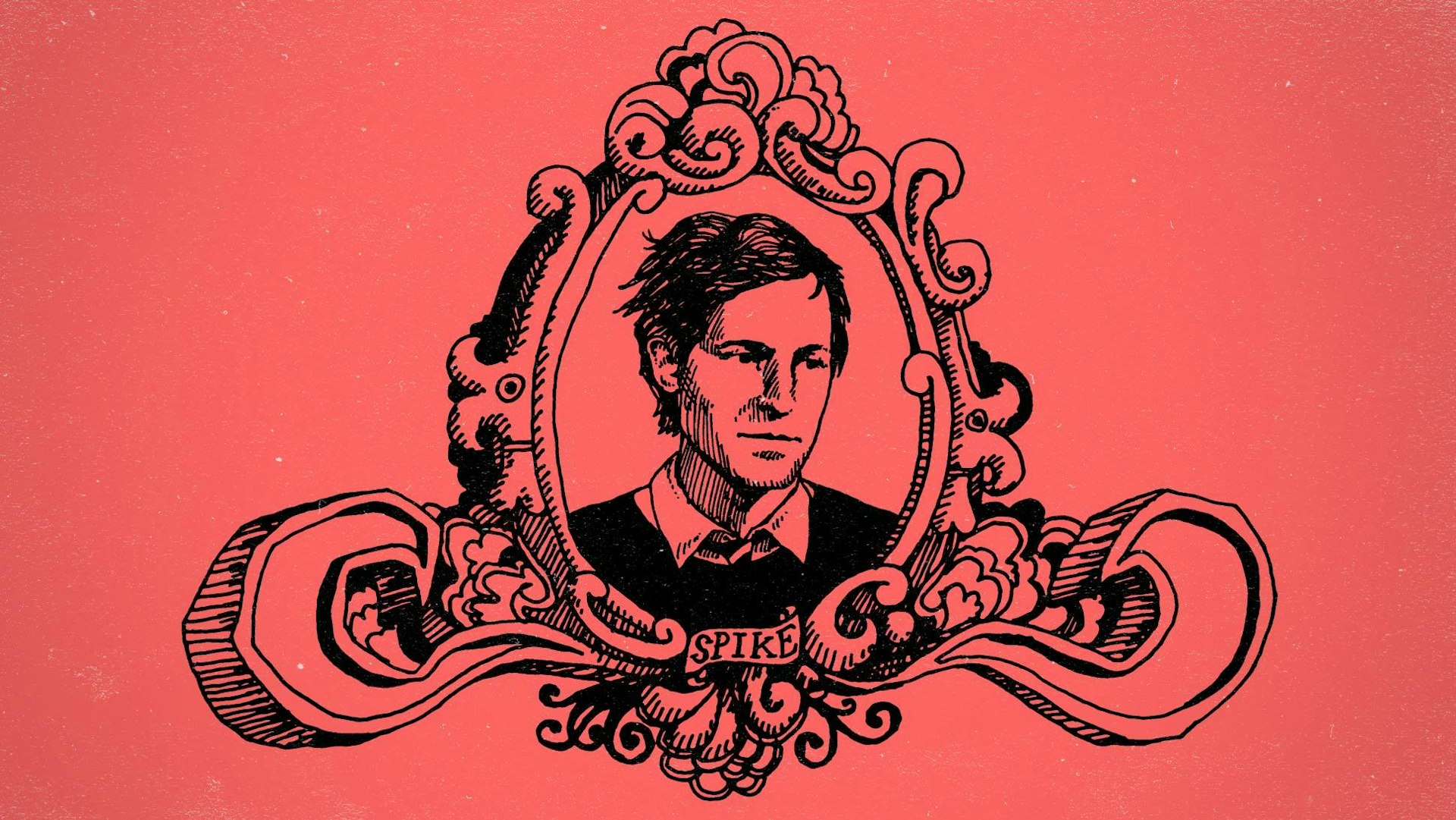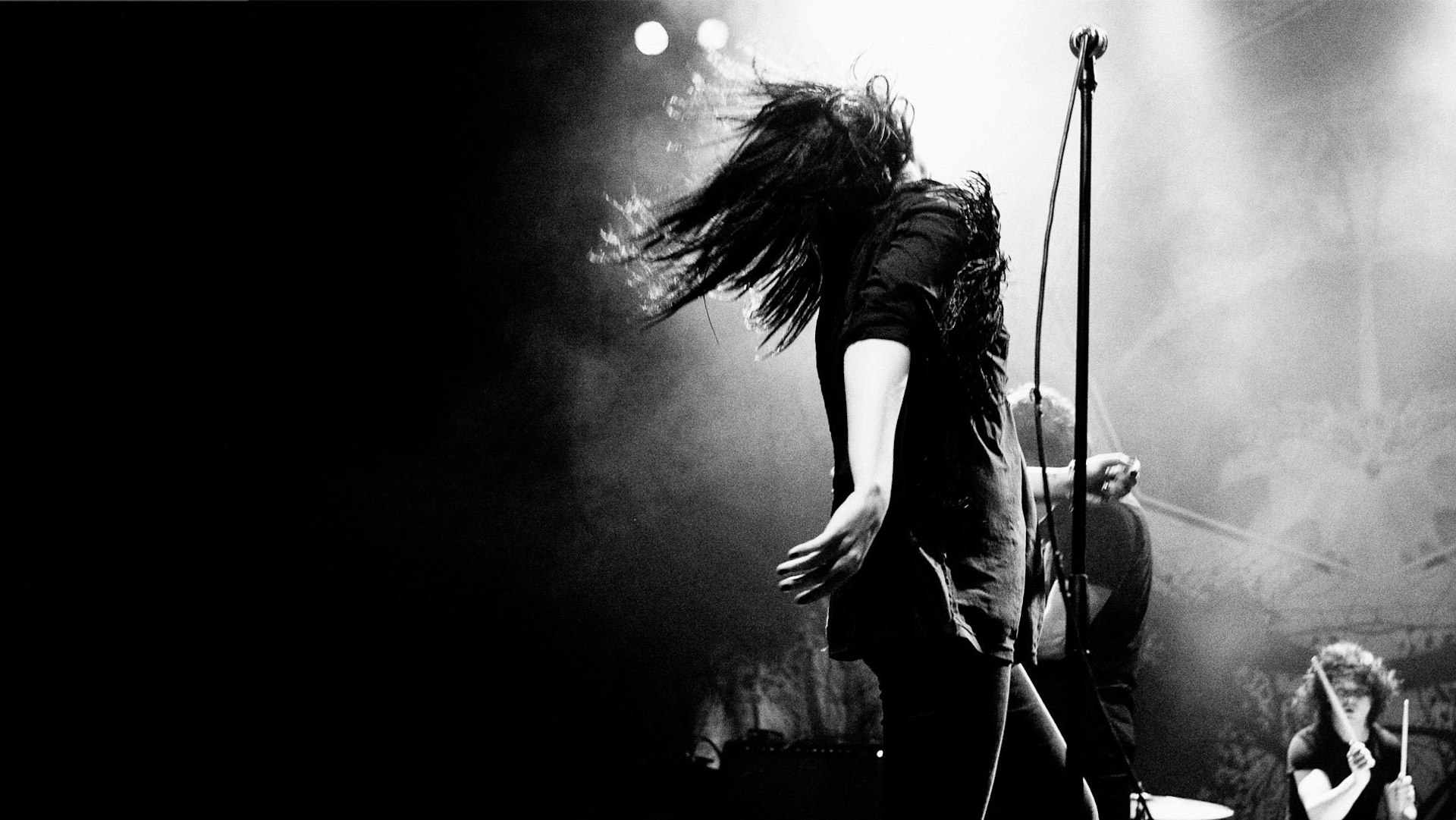
Spike Jonze Tribute
- Text by Mark Lewman
- Illustrations by Paul Willoughby
He talked Christopher Walken into a flying harness. He got Björk to orchestrate a musical in a tyre shop in 110-degree weather. He’s set people on fire, had Nic Cage soaking in a mosquito-infested swamp, and went incognito as a sidewalk street dancer to test an idea. He’s worked with the world’s greatest puppeteers (Malkovich), a pack of live dogs (Weezer), and high explosives (Lakai). He’s built the world’s best kid’s fort, given stickers to the president of the United States, and destroyed a Gap store using a motorcycle and a mini van. He’s made a life out of making hard things look easy and making crazy things look fun. In short, he’s built a name for himself making the whole thing up as he went along. From what I’ve observed, he’s done it all by employing the following holy trinity of operating principles:
1. Stay naïve.
2. Be confident.
3. Always keep moving.
Rewind about twenty-five years and you’ll find a perfect storm to set the stage for Spike’s storied career. Unlike the instant ubiquity of today, the 1980s were arguably the last decade where subculture had a chance to percolate undiscovered. Scenes took longer to fully reach a boil and they required commitment. Membership was cultivated, and the barrier to entry formed a bedrock bond amongst the outcasts who belonged.
For instance, being a kid on the come up in Bethesda, Maryland, in the 1980s, perhaps you took note of the punk scene in your backyard in adjacent Washington, DC. The ethos of said scene was to create a platform to express yourself, because nobody from the establishment (music/politics/art/entertainment) was interested in commercialising what was happening. The kids who created the DC hardcore movement had to fight to build what they believed in, but this independent stance also set the creativity free.
Two other critical elements to add to the mix of early Spike influences: BMX and skateboarding. Both sports are about exploring new boundaries, challenging yourself and seeing the world as a series of invisible lines. Moving through an environment at speed, you have to take constant action and test your abilities and imagination. How many different ways can you use a kerb? How can you bring your own style? This endless drive for progression and individuality is baked into both sports, making them perpetually youthful and creative.
At age seventeen, Spike left Maryland the day after he graduated high school to join us on the staff of Freestylin’ magazine. We hired him because he had that spark: he was inexperienced but had an ability to make things happen and get people to share their energy. We had a warehouse of equipment to document our subculture and tell stories. It was a small scene but it was ours. The bike riders, skateboarders and other characters we came across were exploring the world and living a dream life. Their job was to do whatever the fuck they wanted, and our job was to turn it into inspiration.
Spike arrived on the West Coast, but never stopped driving. We lived together in a nondescript Torrance townhouse with tan walls and beige carpet. Completely bland in every way, we treated it as a command bunker and declared a war on boredom. We filled it with a rotating roster of human driftwood from all over the world. We started Club Homeboy, a mail-order church celebrating underground bike culture (as if the 1980s freestyle BMX industry wasn’t random enough). We went on tour together. Went to shows together. Competitions. Made magazines, ‘zines, music, friends. We made people mad. We figured it out on the fly.
As journalists and artists, we were technically terrible. But we intuitively understood that technical chops would come with constant practise, and the real magic was in expressing an attitude that can only come from living the lifestyle.
For example: A typical mission to cover a halfpipe contest would be enhanced greatly by noting, upon exiting the commercial airline flight from LAX to JFK, an unguarded piece of aviation safety equipment strapped into the overhead bin. It was a bullhorn. Spike smuggled it off the plane, and over the next several days it was discovered that the greatest journalism tool you could bring to New York City was, in fact, a bullhorn. Gridlocked traffic was pulled over by mysterious police siren noises. Pedestrians were verbally ridiculed. Spike’s dad was roused at 2am from the street level (he lived on the 7th floor). At the BMX competition, high-volume freestyle Jamaican toasting was instigated (accent quality debatable). This kind of stuff happened constantly.
Spike mastered the ability to live in the now and see the world as pure creative potential. He learned to share it as a story, and put his own twist on it all. Today the world celebrates this risk-taking burst of energy, a skinny kid from the suburbs who turned independence into an art form. And sometimes I hear people ask, where did it come from?
It came from asking what if.
Mark Lewman is the creative director of Nemo, an action agency. He co-edited Freestylin’ magazine and co-founded club Homeboy alongside Spike Jonze and Andy Jenkins in the late 1980s.
